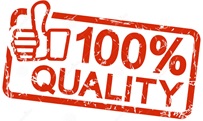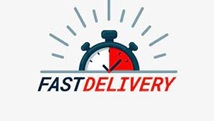- Premium Academic Help From Professionals
- +1 323 471 4575
- support@collegepaper.us
Change Management Modal Research Paper
Change Management Modal Research Paper
| Order ID:89JHGSJE83839 | Style:APA/MLA/Harvard/Chicago | Pages:5-10 |
Instructions:
Change Management Modal Research Paper
Change management has three different modals that it follows, unfreezing, moving, and refreezing. (Palmer, 2017, pg 235). Unfreezing consists of changing the attitude of employees by making them feel uncomfortable and finding the motivator to change. Moving consists of actually implementing the change of the organization. Lastly, refreezing consists of making the new behaviors consistent and ensuring nobody goes back to their hold habits.
While we have the change management concept there are still contingency approaches. Which they tend to argue that the best way to manage change is dependent on the circumstances as every situation is different. There are four contingency approaches discuses in the text, where to start?, the change leadership styles continuum, the stace- duphy contingency matrix, and the hope hailey- bolgun change kaleidoscope.
In the “where to start?” approach it talks about how the there are two key complements of change. The first would be to focus on the pivotal people and the second would be to design a pogrom with clear and meaningful goals. I believe the contingency models are the best approach because as work life career has begun there are so many different circumstances of change that I have been through.
Even though some of the models, we have gone over would work. There are some things that would not have worked and would have been negatively impacted. So, fine tuning and being able to create a unique change program for every single situation is the best possible outcome. Cultural barriers and communication constraints affect the change process by people understanding the change initiative in a different way then they should. As the meaning behind the change may be interpreted incorrectly by some due to different cultural views or communication constraints.
Palmer, I., Dunford, R., & Buchanan, D. (2017). Managing organizational change: A multiple perspectives approach (3rd ed.). Retrieved from https://redshelf.com/
Respond to…
Change management provides organizations with the necessary preparation, resources, and any tools needed to assist with any desired/proposed organizational change in order to achieve desired outcomes. Typically, these methods are extremely structured and practitioners (change managers) typically strictly adhere to the processes.
The contingency approach is essentially the “roll with the punches” approach to change as the method offers more flexibility. This approach does not require the practitioner to adhere to a specific rigid change process model, as the belief is there is no one best way to achieve the desired/proposed organizational change. The contingency approach is just as its name implies as the most appropriate approach is contingent upon with the circumstances and situation calls for or dictates (Palmer, Dunford, & Buchanan, 2017).
The change manager must take consider all factors (urgency of change, scale of change, how change will be received by those impacted, etc.) when making a determination on the appropriate or “best” change approach. The contingency approach is more suited for the constant change that occurs in today’s organization. Change and transition is fast-paced and can bring about different emotional responses from change leaders and those affected creating difficulty in simply accepting the change as the has become part of organizational life and those affected must be allowed to adapt to the change; and that adaptation is reactionary.
With respect to the impact of any communication and cultural barriers could have on the change process, both could have a major impact on the process. Employees within a specific office come from a myriad of backgrounds (i.e. ethnic, national, religious, etc.), and in some organizations that is multiplied if there are locations in other countries.
Communication of the change and the processes (or any organizational communication) has to be consistent enough so that nothing is confused or lost in any translation that occurs. Additionally, if the proposed/desired change is to not have any resistance (or as little as possible) the change and/or the change process cannot be “offensive” to anyone culturally (which is also inclusive of the legal system as it can by tied to a culture).
The main difference between standardized change management and the contingency approach is the strict adherence to the model that the change manager begins the process with (the amount of flexibility).
References
Center for Creative Leadership. (Producer) (n.d.). Leading in times of transition (Links to an external site.) [Audio podcast]. Retrieved from http://www.ccl.org/leadership/podcast/transcript3.aspx?pageId=1576
Palmer, I., Dunford, R., & Buchanan, D. (2017). Managing organizational change: A multiple perspectives approach (3rd ed.).
Change Management Modal Research Paper
|
RUBRIC |
||||||
|
Excellent Quality 95-100%
|
Introduction
45-41 points The background and significance of the problem and a clear statement of the research purpose is provided. The search history is mentioned. |
Literature Support 91-84 points The background and significance of the problem and a clear statement of the research purpose is provided. The search history is mentioned. |
Methodology 58-53 points Content is well-organized with headings for each slide and bulleted lists to group related material as needed. Use of font, color, graphics, effects, etc. to enhance readability and presentation content is excellent. Length requirements of 10 slides/pages or less is met. |
|||
|
Average Score 50-85% |
40-38 points More depth/detail for the background and significance is needed, or the research detail is not clear. No search history information is provided. |
83-76 points Review of relevant theoretical literature is evident, but there is little integration of studies into concepts related to problem. Review is partially focused and organized. Supporting and opposing research are included. Summary of information presented is included. Conclusion may not contain a biblical integration. |
52-49 points Content is somewhat organized, but no structure is apparent. The use of font, color, graphics, effects, etc. is occasionally detracting to the presentation content. Length requirements may not be met. |
|||
|
Poor Quality 0-45% |
37-1 points The background and/or significance are missing. No search history information is provided. |
75-1 points Review of relevant theoretical literature is evident, but there is no integration of studies into concepts related to problem. Review is partially focused and organized. Supporting and opposing research are not included in the summary of information presented. Conclusion does not contain a biblical integration. |
48-1 points There is no clear or logical organizational structure. No logical sequence is apparent. The use of font, color, graphics, effects etc. is often detracting to the presentation content. Length requirements may not be met |
|||
 |
 |
|||||
 |
 |
 |
||||
| You Can Also Place the Order at www.collegepaper.us/orders/ordernow or www.crucialessay.com/orders/ordernow
Change Management Modal Research Paper |
||||||
Change Management Modal Research Paper


